A square card board is suspended by passing a pin through a narrow hole at its one corner. Draw a diagram to show its rest position. In the diagram, mark the point of suspension by the letter S and the centre of gravity by the letter G.
To solve the question, we need to draw a diagram of a square cardboard suspended at one of its corners and indicate the point of suspension (S) and the center of gravity (G). Here’s the step-by-step solution:
Step 1: Draw the Square Cardboard
Start by sketching a square to represent the cardboard. You can label the corners of the square as A, B, C, and D for reference.
Hint: Remember that all sides of a square are equal in length.
Step 2: Identify and Mark the Center of the Square
To find the center of the square, draw two diagonal lines from opposite corners (e.g., from A to C and from B to D). The point where these diagonals intersect is the center of the square.
Hint: The center of gravity (G) is located at the intersection of the diagonals.
Step 3: Mark the Center of Gravity
Label the center of the square as G. This point represents the center of gravity of the cardboard.
Hint: The center of gravity is the point where the weight of the cardboard can be considered to act.
Step 4: Indicate the Point of Suspension
Choose one corner of the square (for example, corner A) to represent the point of suspension. Draw a small circle or dot at this corner and label it as S.
Hint: The point of suspension is where the pin passes through the cardboard.
Step 5: Draw the Weight Force
From the center of gravity (G), draw a downward arrow to represent the weight of the cardboard (mg). This arrow indicates the direction of the gravitational force acting on the cardboard.
Hint: The weight acts vertically downward from the center of gravity.
Step 6: Finalize the Diagram
Make sure the diagram is clear, with the square, point of suspension (S), center of gravity (G), and the weight force clearly marked.
Final Diagram
- The square cardboard is drawn with corners labeled A, B, C, and D.
- Point S is marked at one corner (e.g., A).
- Point G is marked at the center of the square.
- An arrow pointing downward from G indicates the weight (mg).
Summary of the Diagram
- S: Point of suspension at corner A.
- G: Center of gravity at the center of the square.
- Weight force (mg) acting downward from G.
Start by sketching a square to represent the cardboard. You can label the corners of the square as A, B, C, and D for reference.
To find the center of the square, draw two diagonal lines from opposite corners (e.g., from A to C and from B to D). The point where these diagonals intersect is the center of the square.
Label the center of the square as G. This point represents the center of gravity of the cardboard.
Choose one corner of the square (for example, corner A) to represent the point of suspension. Draw a small circle or dot at this corner and label it as S.
From the center of gravity (G), draw a downward arrow to represent the weight of the cardboard (mg). This arrow indicates the direction of the gravitational force acting on the cardboard.
Make sure the diagram is clear, with the square, point of suspension (S), center of gravity (G), and the weight force clearly marked.
- The square cardboard is drawn with corners labeled A, B, C, and D.
- Point S is marked at one corner (e.g., A).
- Point G is marked at the center of the square.
- An arrow pointing downward from G indicates the weight (mg).
- S: Point of suspension at corner A.
- G: Center of gravity at the center of the square.
- Weight force (mg) acting downward from G.
Topper's Solved these Questions
- FORCE BOOK - ICSECHAPTER - FORCE EXERCISE - EXERCISE 1(B) Multiple choice questions
2 Videos
- FORCE BOOK - ICSECHAPTER - FORCE EXERCISE - EXERCISE 1(C )
14 Videos
- FORCE BOOK - ICSECHAPTER - FORCE EXERCISE - EXERCISE 1(A) Numericals
18 Videos
- ELECTRO-MAGNETISM BOOK - ICSECHAPTER - ELECTRO-MAGNETISM EXERCISE - EXERCISE-10 (C) NUMERICALS
1 Videos
- HOUSEHOLD CIRCUITS BOOK - ICSECHAPTER - HOUSEHOLD CIRCUITS EXERCISE - EXERCISE -9(B) (MULTIPLE CHOICE TYPE)
2 Videos
Similar Questions
An object is viewed through a glass prism with its vertex pointing upwards. Draw a ray diagram to show the formation of its image as seen by the observer.
View SolutionA uniform flat circular rim is balanced on a sharp vertical nail by supporting it at a point A, as shown in Fig 1.41 Mark the position of the centre of gravity of the rim in the diagram by the letter G.
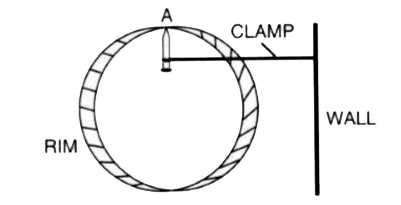
View SolutionIn Figure, a monochromatic point source of light S is viewed by an observer O through a prism P. complete the diagram to show the image formed by the prism and as seen by the observer O. label the image by the letter I.
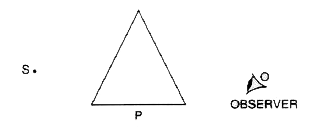
View SolutionFig.1.42 shows three pieces of card board of uniform thickness cut into three different shapes. On each diagram draw two lines to indicate the position of the centre of gravity G.

View SolutionWhat is the cause of dispersion of white light through a glass prism Draw a ray diagram to show the path of light when two identical glass prisms are arranged together in inverted position with respect to each other and narrow beam of white light is allowed to fall obliquely on one of the faces of the prisms.
View SolutionA uniform rod of weight Fg and length L is supported at its ends by a frictionless through as shown in figure. (a) Show that the centre of gravity of the rod must be vertically over point O when the rod is in equilibrium. (b) Determine the equilibrium value of the angle θ.
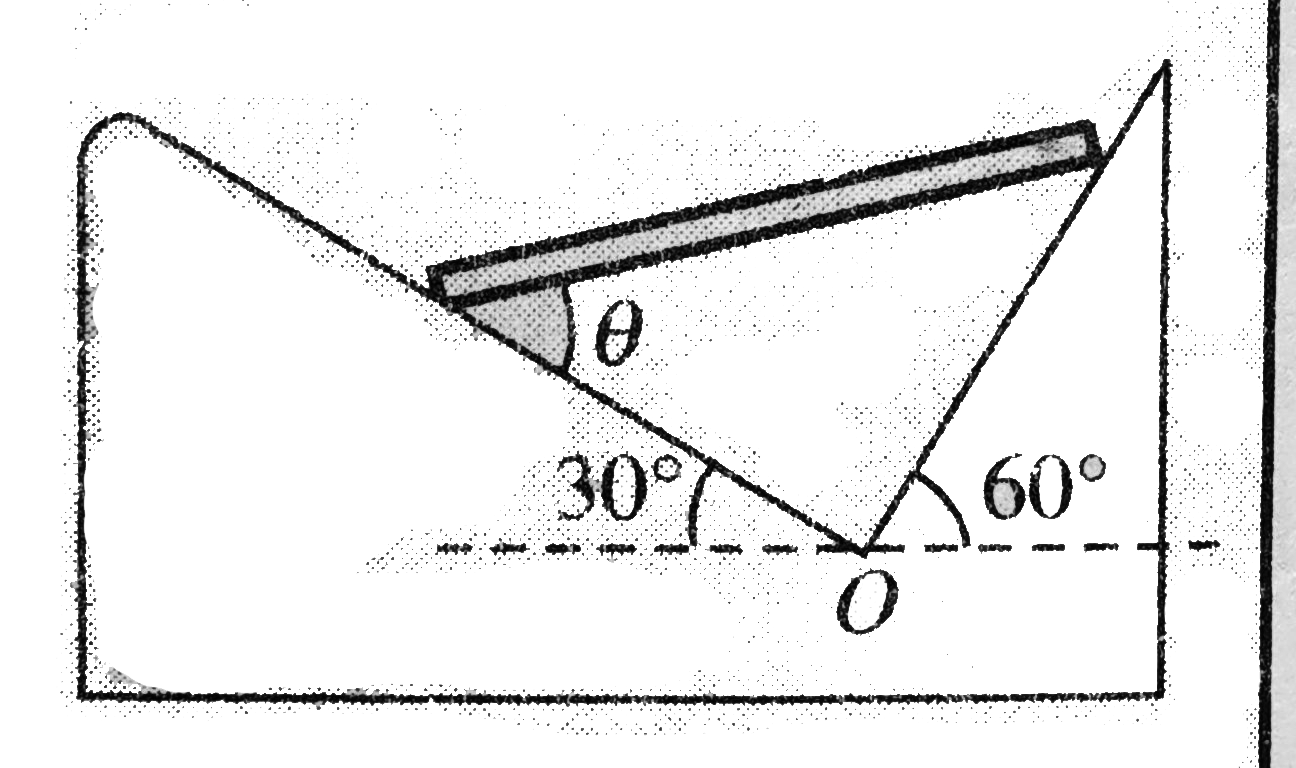
View Solution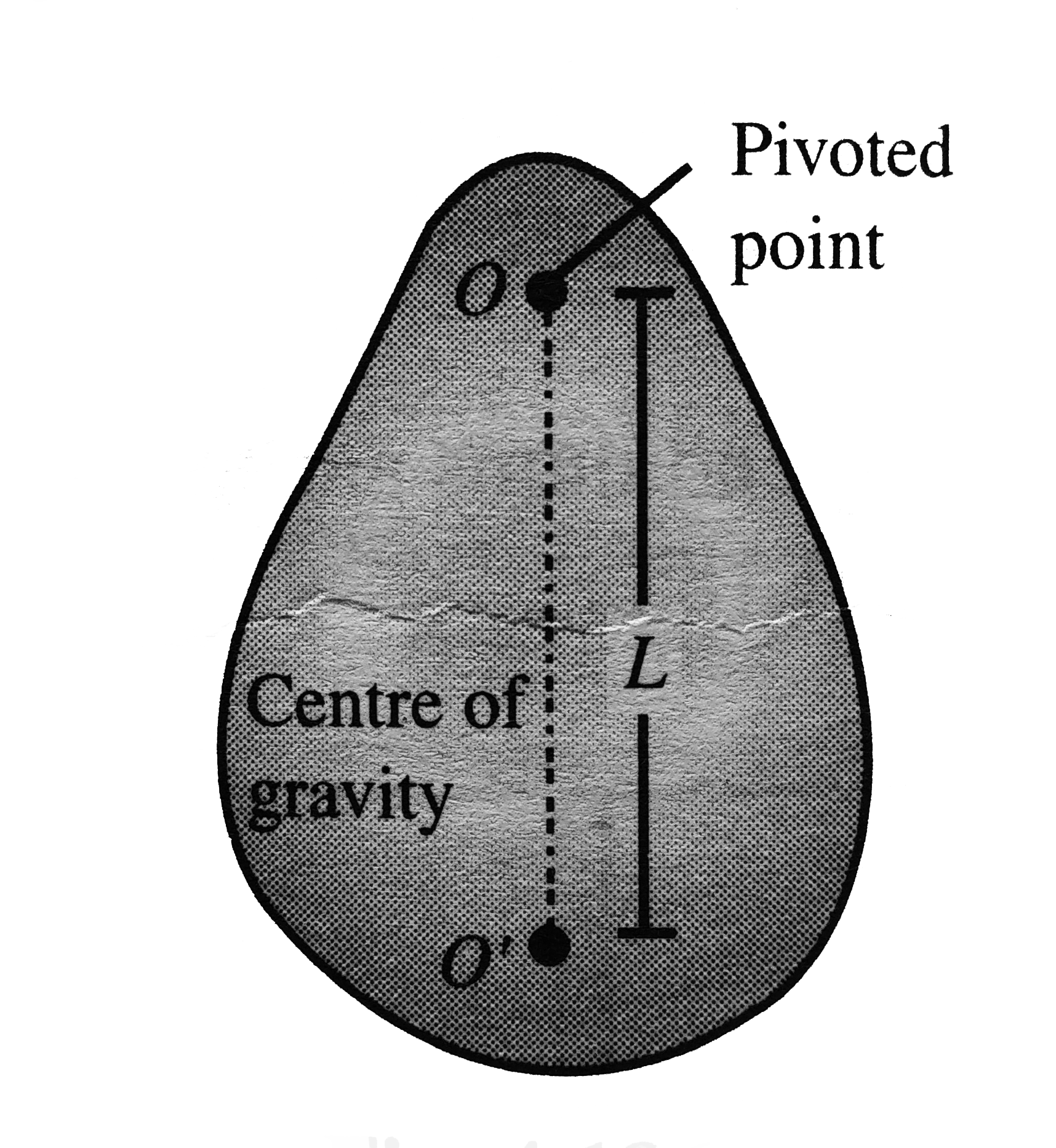
In physical pendulum, the time period for small oscillation is given by T=2π√IMgd where I is the moment of inertial of the body about an axis passing through a pivoted point O and perpendicular to the plane of oscillation and d is the separation point between centre of gravity and the pivoted point. In the physical pendulum a speacial point exists where if we concentrate the entire mass of body, the resulting simple pendulum (w.r.t. pivot point O) will have the same time period as that of physical pendulum This point is termed centre of oscillation.
T=2π√IMgd=2π√Lg Moreover, this point possesses two other important remarkable properties:
Property I: Time period of physical pendulum about the centre of oscillation (if it would be pivoted) is same as in the original case.
Property II: If an impulse is applied at the centre of oscillatioin in the plane of oscillation, the effect of this impulse at pivoted point is zero. Because of this property, this point is also known as the centre of percussion. From the given information answer the following question:
Q. A uniform rod of mass M and length L is pivoted about point O as shown in Figgt It is slightly rotated from its mean position so that it performs angular simple harmonic motion. For this physical pendulum, determine the time period oscillation.
View SolutionDraw a ray diagram showing the dispersion through a prism when a narrow beam of white light is incident on one of its refracting surface. Also indicate the order of the colours of the spectrum obtained.
View SolutionFigure shows the section of a semi-circular glass slab having its centre at O. three rays of light A,B and C of the same colour are incident on the slab and strike on the edge XY at the point O. the light ray B suffers refraction along OB'.
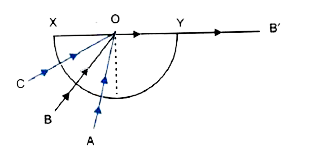
(a) On the diagram, mark the critical angle by C.
(b) The rays enter the slab undeviated. give reason.
(c) Draw the path of rays A and C after they strike the edge XY.
(d) Name the phenomenon which the rays A and C exhibit.
View SolutionThe square structure shown in Fig. consists of lour point masses connected by rods of negligible Find the moment of inertia of the structure about the following axes: (a) axis A, passing through the centre of the structure and normal to its plane, (b) axis B passing through one of the point masses and normal to the plane of the structure, (c) axis CC', passing through two adjacent point masses and (d) axis DD', along the diagonal of the structure.

View Solution
